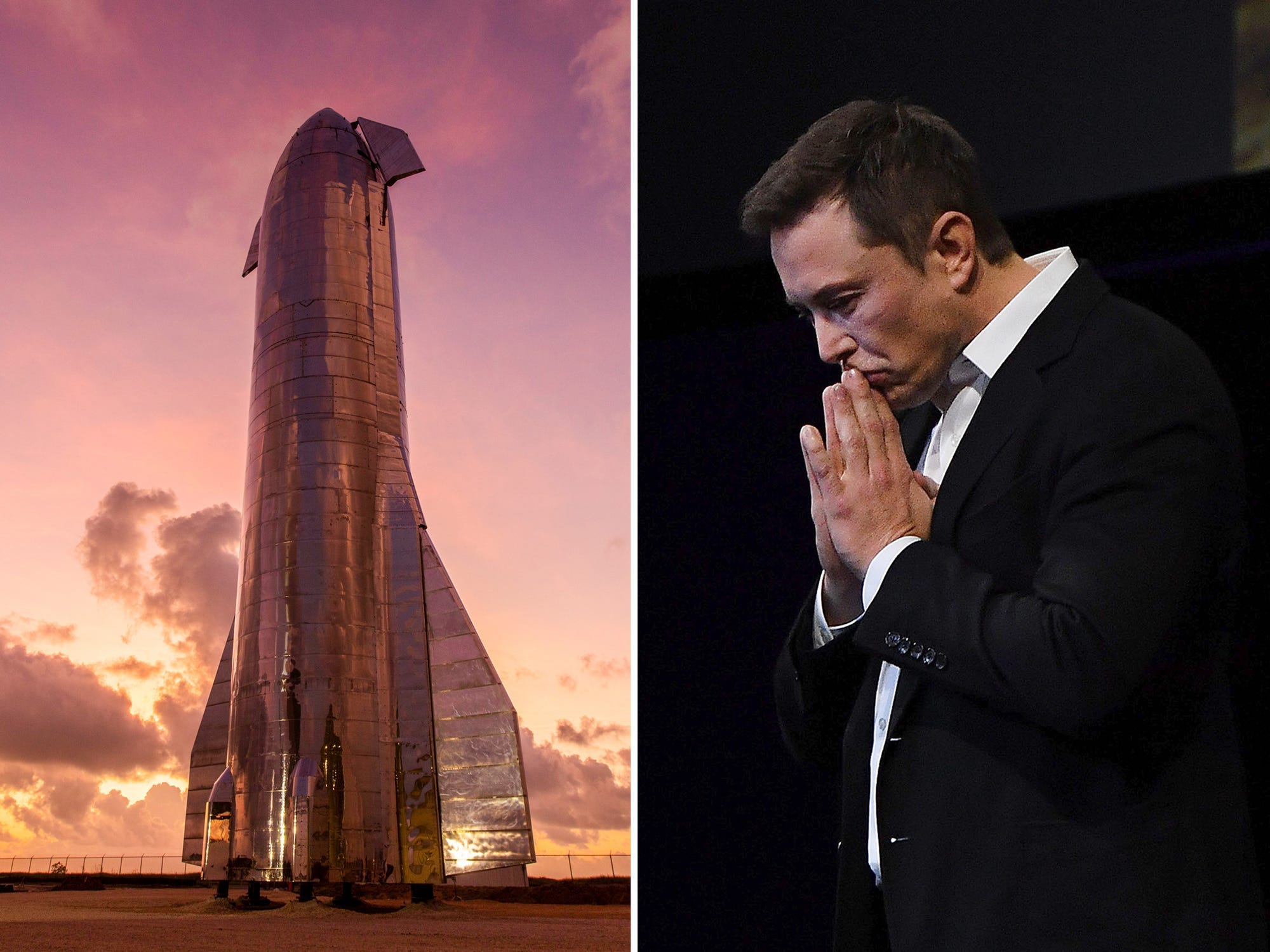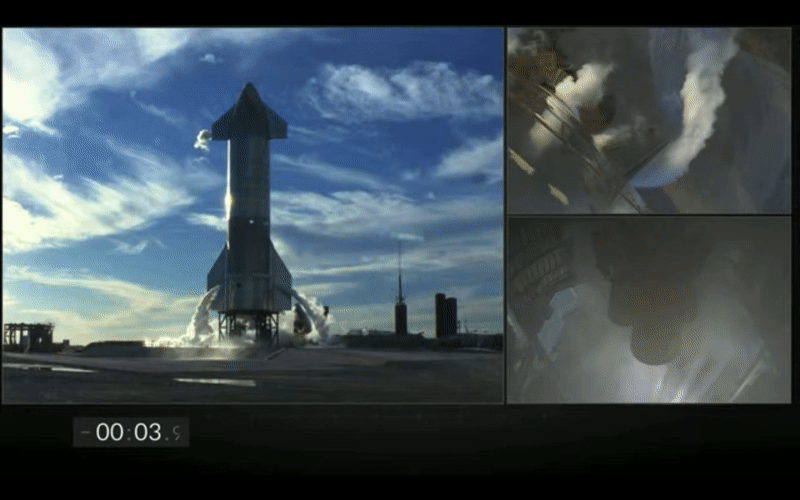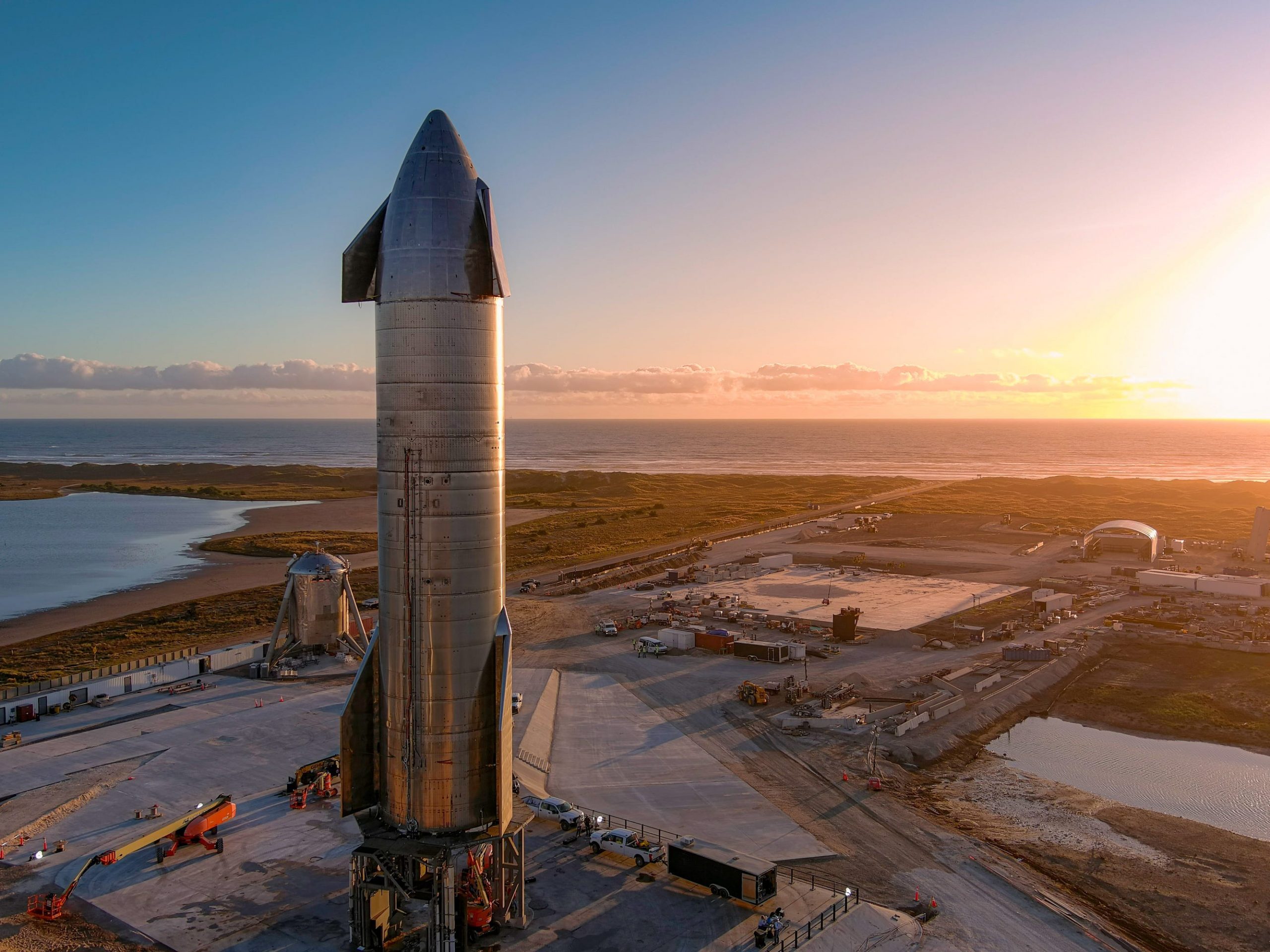
SpaceX; Mark Brake/Getty Images; Business Insider
- SpaceX was prepared to launch an advanced prototype of its Starship spaceship about 40,000 feet into the air above its Boca Chica, Texas facilities on Tuesday.
- The rocket’s Raptor engines, however, cut off the launch process just 1.3 seconds before liftoff.
- Elon Musk had previously estimated a 2-in-3 chance that the test flight would fail, as it attempted to push Starship higher than ever before.
- Visit Business Insider’s homepage for more stories.
A prototype of SpaceX’s Starship spaceship was prepared to rocket toward the stratosphere in its most ambitious test flight yet on Tuesday. But just 1.3 seconds before liftoff, at 4:35 p.m. CT, the Raptor engines automatically aborted the launch.
With just 25 minutes left in its launch window, SpaceX said it was standing down from any further attempts on Tuesday. The company could try again between 8 a.m. and 5 p.m. CT (9 a.m. and 6 p.m. ET) on Wednesday or Thursday.
Elon Musk, who founded SpaceX in 2002, had previously estimated a 2-in-3 chance that the test flight would fail. Musk said last week that a “lot of things need to go right” for the prototype, called Starship serial no. 8, or SN8, to land intact.

SpaceX
That’s because this is the most strenuous test flight SpaceX has ever attempted for Starship. The vehicle was set to roar about 41,000 feet, or 7.8 miles (12.5 kilometers), into the air above SpaceX’s expanding facilities at Boca Chica, Texas.
SN8 also represents the most advanced Starship prototype the company has launched to date. It towers 16 stories, uses three car-sized Raptor rocket engines, and comes with wing flaps to steer it through the atmosphere. (SpaceX is not yet ready to test a 23-story booster that’d eventually help propel a spaceship to orbit.)
Someday, the Starship-Super Heavy launch system could slash the cost of reaching space by 1,000-fold.
If Musk's vision for the Starship system plays out, the spaceship may one day cart humans to Mars en masse and help build an independent Martian city.

SpaceX
It was not immediately clear why the engines aborted this test flight. Previous Starship "hops" - smaller versions rocketing a few hundred feet into the air - have resulted in crumpled prototypes or, as was the case on May 29, catastrophically exploded.
In August a grain-silo-like prototype the same size as SN8 successfully flew about 492 feet (150 meters) into the air using a single raptor engine and landed downrange.
This is a developing story.
